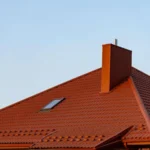
Is Mold on Wood Furniture Dangerous
Finding mold on wood furniture can be a shocking and frustrating experience for any homeowner. The sight of those small, dark patches on your beloved furniture might make you wonder: Is mold on wood furniture dangerous? This blog will discuss how dangerous mold is for your future and provide safe steps for managing it.
What Is Mold, And Why Is It On My Wood Furniture?
Mold is a fungus that establishes colonies on moist surfaces in high-humidity conditions. It grows by releasing airborne spores that settle on wet surfaces. Mold on wood furniture is common in areas with high humidity or moisture problems, such as basements, bathrooms, or poorly ventilated spaces.
Another question that might pop up in your mind: Can mold grow on wood? The answer is yes. Moist and spongy wood allows mold to establish its presence successfully. Any furniture made from wood is vulnerable to mold growth when it remains exposed to wet conditions caused by roof leaks, humidity, or neglected spill cleanup.
Is Mold On Wood Furniture Dangerous
Is mold on wood furniture dangerous? The short answer is yes. While mold on furniture may not always seem like a major issue, it can present significant health risks and other problems. Let’s shed light on them.
Health Risks
Mold growth results in the production of allergens, irritants, and mycotoxins with varied health risks to people. Mold spores easily enter your airways, triggering allergic reactions, asthma attacks, and respiratory problems. Mold exposure leads to different symptoms that commonly include:
- Sneezing
- Coughing
- Runny nose
- Eye irritation
- Skin rashes
The prolonged exposure to mold is particularly dangerous for individuals who already suffer from health complications or have weak immune systems because they may develop long-term respiratory conditions.
Structural Damage
Mold infestation produces two distinct impacts on people: it harms their wellness and simultaneously destroys their household furniture. Mold colonies on wooden materials will gradually damage its structure. The untreated mold growth destroys wood fibers, making the furniture soft and potentially leading to actual rot. The mold infestation could result in expensive repair and restoration or eventual replacement of the furniture.
Odor Problems
Mold-damaged furniture develops a musty odor that will permeate the room and persist in your home. Mold produces an unpleasant smell that won’t go away unless you perform complete mold remediation and cleaning.
How To Identify Mold On Furniture
Identifying mold on furniture isn’t always easy, especially in the early stages when it’s just starting to grow. The visible signs of mold growth on wood surfaces include black, green, and white blotches, but it can also hide under cracks and crevices. Look for the following signs to detect mold on wood furniture.
- Stained wood surfaces show blackened or discolored marks.
- A musty smell permeates the room’s air and rises from the furniture.
- Wood peeling and warping usually indicate mold growth.
Act immediately upon suspecting mold growth since it can spread to other areas.
How To Remove Mold From Wood Furniture
If you’ve discovered mold on wood furniture and want to safely remove it, there are several DIY methods you can try. Below are some of them.
Clean With Soap And Water
A soft cloth with a mild soap and water solution can deal with minor mold spots. Clean your wooden furniture with a soft cloth to wipe away mold. Dry the area using a dry towel because drying it prevents new moisture accumulation.
Use Vinegar
Vinegar serves as an effective natural solution for eliminating mold. Apply a solution of water and vinegar in equal measures through a spray bottle for light misting on affected surfaces. Leave the mixture to rest for 10-15 minutes, followed by wiping off the surface using a fresh cloth. Don’t forget to dry it after completing the process.
Use Baking Soda
Baking soda is effective in fighting against mold infestation. Make a paste of baking soda and water and apply it directly to the moldy surface. Use a soft toothbrush or a cloth to rub the paste on the affected area. Later, use water to rinse it. Again, remember to dry the furniture to prevent moisture accumulation.
Sand The Surface
For serious mold infestations, carefully sand the wood’s surface to eliminate mold. Once you are done with the job, it is vital to treat it with a protective finish, which will stop mold growth in the future.
When To Call A Professional
If the mold on wood furniture is widespread or causing significant damage, it may be time to call a professional mold remediation specialist. These professionals possess specialized equipment and knowledge for adequate mold assessment and removing it safely from the furniture. An expert mold remediation specialist will help detect any hidden water troubles that spurred mold growth in the first place.
Preventing Mold Growth On Furniture
The most effective mold strategy involves preventing it before it occurs. Here are a few tips to keep mold on furniture at bay:
- Maintain your home’s humidity between 30% and 50% through proper measures. Use a dehumidifier to maintain ideal humidity levels, especially when you have basements or other humidity-prone spaces.
- Prevent and treat leaks whenever and wherever they occur. Regularly inspect roofs, windows, and plumbing pipes for any signs of leaks.
- Open windows whenever you can to let the fresh air flow in. Use ceiling and exhaust fans for better ventilation in kitchens and bathrooms.
- Keep your furniture clean and dry. Conduct routine cleanups of all surfaces, particularly in humid locations.
Conclusion
To sum it up, mold on wood furniture is indeed dangerous, both for your health and the longevity of your furniture. Small mold patches should never be ignored because neglecting them may later result in health problems and damage to your furniture structure
Catching mold growth on wood furniture requires immediate action followed by effective cleaning procedures. If you self-handle this problem or seek professional assistance, the essential action is to stop mold from spreading and damaging additional items.
You must take immediate measures to protect your home and your health against mold infestations. Contact the expert mold inspectors at Peace of Mind Home Inspections to handle your mold concerns for your furniture and all other areas.

 Previous Post
Previous Post Next Post
Next Post



